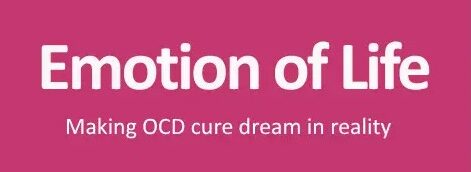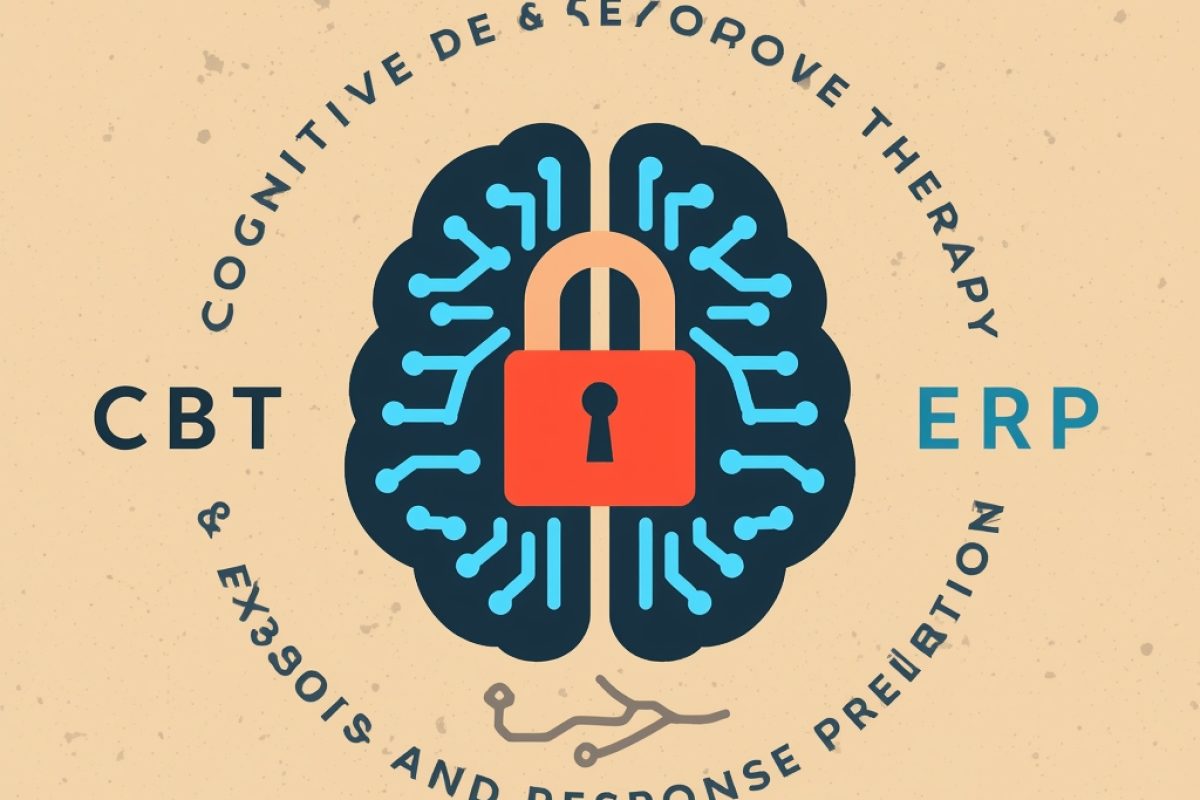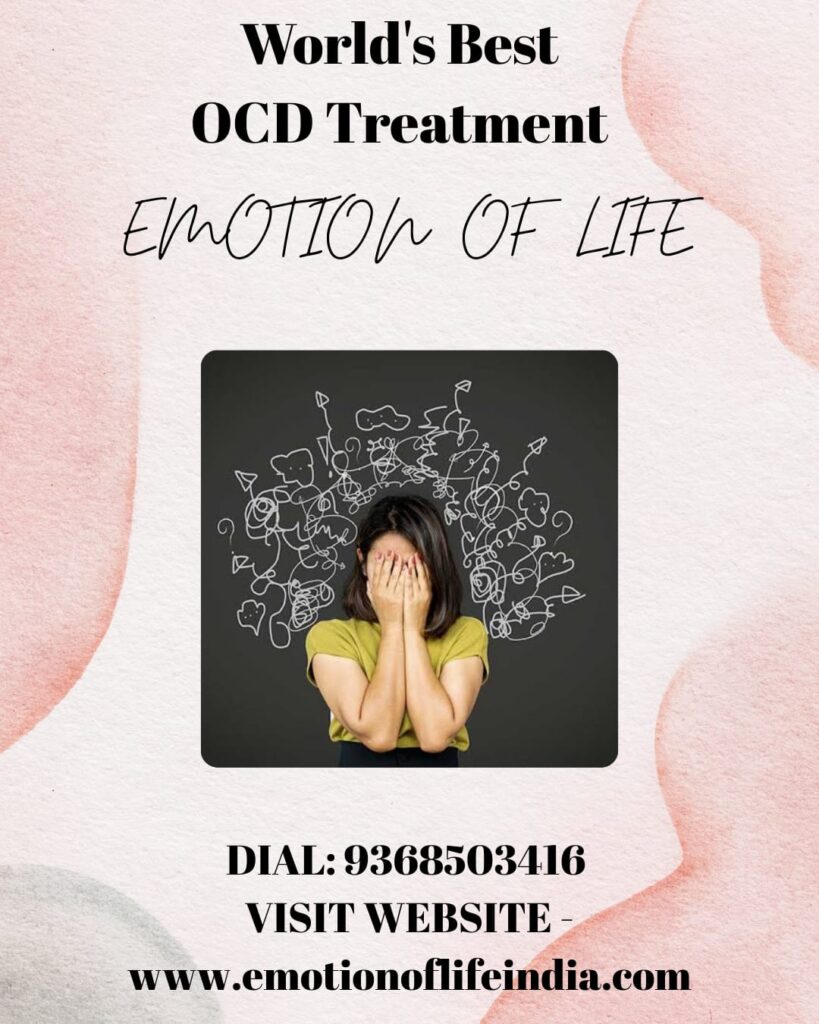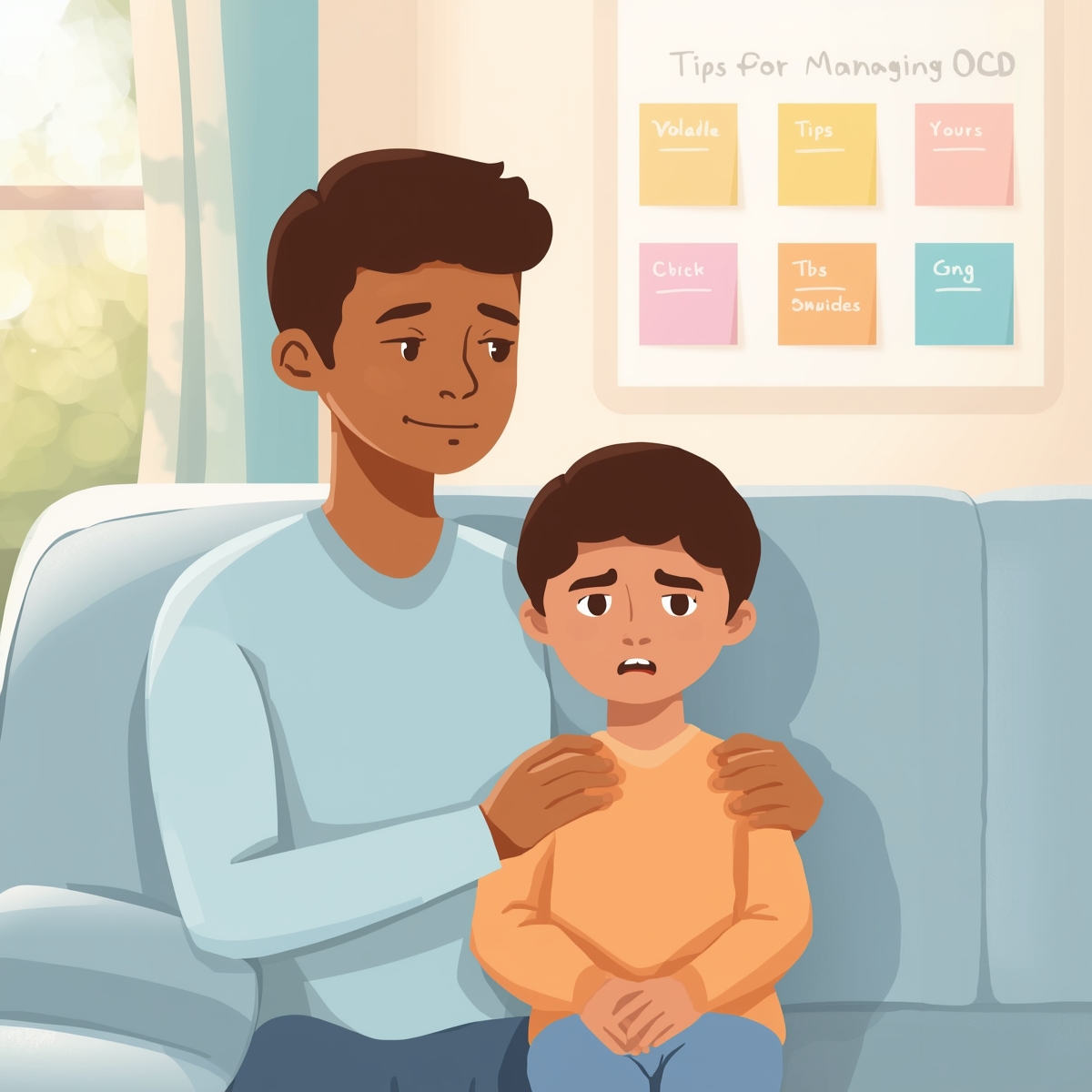CBT and ERP for OCD Obsessive-Compulsive Disorder (OCD) is a mental health condition marked by intrusive thoughts (obsessions) and repetitive behaviors (compulsions) that can interfere with daily life. Many individuals and families worry about the side effects, dependency, and long-term use of medications to manage OCD. Fortunately, there is a proven, effective, and drug-free approach: CBT and ERP for OCD without drugs combined with Exposure and Response Prevention (ERP).
At Emotion of Life, under the guidance of Shyam Gupta, a trained and experienced OCD clinical therapist, we conduct structured, non-medication therapies that empower individuals to overcome OCD naturally. Our programs prepare people for a holistic healing approach through CBT and ERP — whether you want online OCD treatment or in-person therapy in Agra.
Understanding CBT and ERP
CBT and ERP for OCD, A synonym for cognitive therapy would be something like an evidence-based psychotherapy that assists individuals in identifying, challenging, and replacing distorted thought patterns related to OCD. At times, the illogical fears of OCD are those of exaggerated responsibility for preventing harm; these fears energize the compulsive behaviours. Thus, by changing such thought patterns, CBT teaches one how to suppress the anxiety and hold oneself.
ERP is a structure within the very custody of CBT and is regarded as guiding most drug-free treatments for OCD. Gradual exposure to anxiety-inducing thoughts or situations while refraining from compulsive rituals is typical of ERP. Gradually, the brain develops an understanding that feelings of anxiety lessen on their own while the rituals serve no purpose.
Example: Let’s consider a germ-fearing individual who washes his or her hands excessively. ERP might include touching an alleged “contaminated” object. The client is then prompted to delay washing their hands. Guided exposure exercises slowly begin to reduce anxiety and, ultimately, the compulsion to perform behaviors. In this way, individuals begin retaking control of their lives.
Why Choose CBT and ERP for OCD Without Drugs
Some of the advantages of choosing CBT and ERP over medicine include:
- No Side Effects: Apart from some mild complications, psychiatric drugs sometimes cause nausea, tiredness, or weight gain. These issues are avoided by not taking drugs.
- Long Term Effectiveness: Therapy imparts permanent skills to deal with obsessions and compulsions.
- Empowerment: Patients actively participate in their recovery instead of relying on medicine that simply masks symptoms.
- Well-Sustained Recovery: Evidence suggests higher relapse rates among patients who opt for medication-only therapy compared to those who complete well-structured CBT and ERP for OCD without drugs.
How CBT and ERP Therapy Works
A typical CBT and ERP program works through the following steps:
- Assessment: The client is assessed in detail for symptoms, triggers, severity, and functional impairment.
- Personalized Treatment Plan: A hierarchy of fears and compulsions is created for gradual exposure exercises.
- Exposure Sessions: Clients face feared situations with therapist supervision and refrain from performing rituals.
- Homework and Practice: Daily practice reinforces therapy, reprogramming the brain against compulsive behaviors.
- Integrative Techniques: Mindfulness, cognitive restructuring, or emotional regulation may be incorporated.
- Follow-Up and Maintenance: Additional sessions and strategies ensure sustained progress.
Online and In-Person Options
At Emotion of Life, we understand the need for flexibility. Our online treatment delivers CBT and ERP in a safe, interactive tele-session atmosphere. Studies prove that online ERP is just as effective as in-person therapy when travel isn’t an option.
Our Agra-based in-person therapy facility offers a culturally sensitive and personalized approach. Families are continuously engaged throughout the entire program to ensure consistent support, especially for younger children and adolescents.
Complementary Techniques
In addition to CBT/ERP core treatments, our holistic programs include the following supportive therapies:
- Acceptance and Commitment Therapy (ACT): Minimizes the emotional impact of intrusive thoughts.
- Mindfulness-Based Stress Reduction (MBSR): Increases awareness and detachment from compulsions.
- Cognitive Restructuring: Works on distorted cognition and thought-action fusion.
- DBT Skills: Offers emotion regulation and distress tolerance during heightened anxiety.
All of these complementary treatments build resilience and help patients maintain long-term recovery gains.
Take the First Step Towards Recovery
If you or someone you know is struggling with OCD, remember — recovery is possible. CBT and ERP provide a structured and evidence-based path to long-term relief from obsessive thoughts and compulsive behaviors.
At Emotion of Life, clients receive expert guidance, therapy, and the necessary tools to reclaim their lives.
Call us! Find out more about our CBT and ERP for OCD without drugs, available online and at our Agra center. Make the important choice to say no to OCD.









